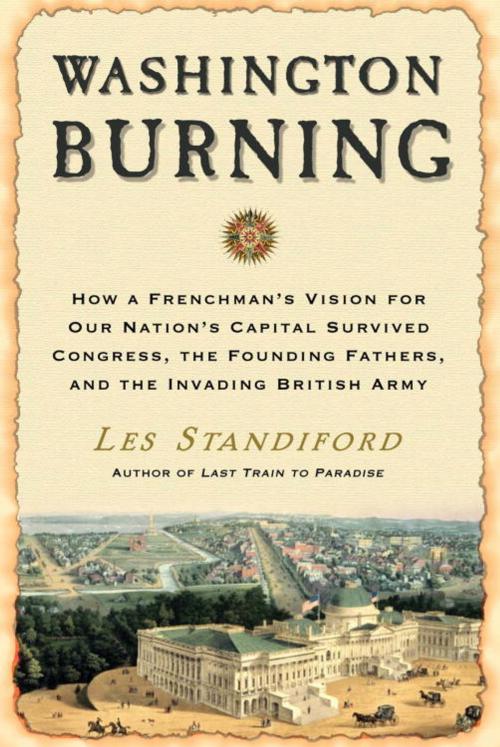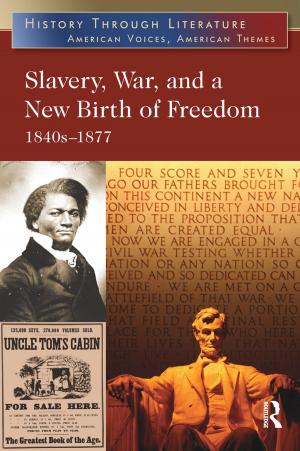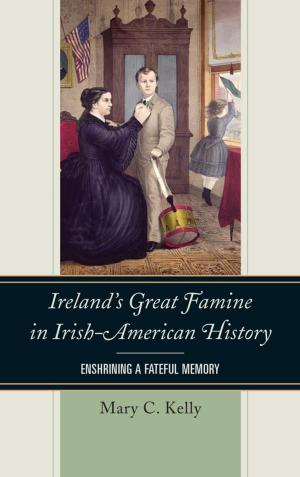Washington Burning
How a Frenchman's Vision for Our Nation's Capital Survived Congress, the Founding Fathers, and the Invading British Army
Nonfiction, Social & Cultural Studies, Social Science, Sociology, Urban, History, Americas, United States, 19th Century| Author: | Les Standiford | ISBN: | 9780307449290 |
| Publisher: | Crown/Archetype | Publication: | May 6, 2008 |
| Imprint: | Crown | Language: | English |
| Author: | Les Standiford |
| ISBN: | 9780307449290 |
| Publisher: | Crown/Archetype |
| Publication: | May 6, 2008 |
| Imprint: | Crown |
| Language: | English |
The Riveting Story of the Federal City and the Men Who Built It
In 1814, British troops invaded Washington, consuming President Madison’s hastily abandoned dinner before setting his home and the rest of the city ablaze. The White House still bears scorch and soot marks on its foundation stones. It was only after this British lesson in “hard war,” designed to terrorize, that Americans overcame their resistance to the idea of Washington as the nation’s capital and embraced it as a symbol of American might and unity.
The dramatic story of how the capital rose from a wilderness is a vital chapter in American history, filled with intrigue and outsized characters–from George Washington to Pierre Charles L’Enfant, the eccentric, passionate, difficult architect who fell in love with his adopted country. This Frenchman–both inspired by the American cause of liberty and wounded while defending it–first endeared himself to then General Washington with a sketch drawn at Valley Forge. Designing buildings, parades, medals, and coins, L’Enfant became the creator of a new American aesthetic, but the early tastemaker had ambition and pride to match his talent. Self-serving and incapable of compromise, he was consumed with his artistic dream of the Federal City, eventually alienating even the president, his onetime champion.
Washington struggled to balance L’Enfant’s enthusiasm for his brilliant design with the strident opposition of fiscal conservatives such as Thomas Jefferson, whose counsel eventually led to L’Enfant’s dismissal. The friendships, rivalries, and conflicting ideologies of the principals in this drama–as revealed in their deceptively genteel correspondence and other historical sources–mirror the struggles of a fledgling nation to form a kind of government the world had not yet known.
In these pages, as in Last Train to Paradise and Meet You in Hell, master storyteller Les Standiford once again tells a compelling, uniquely American story of hubris and achievement, with a man of epic ambition at its center. Utterly absorbing and scrupulously researched, Washington Burning offers a fresh perspective on the birth of not just a city, but a nation.
The Riveting Story of the Federal City and the Men Who Built It
In 1814, British troops invaded Washington, consuming President Madison’s hastily abandoned dinner before setting his home and the rest of the city ablaze. The White House still bears scorch and soot marks on its foundation stones. It was only after this British lesson in “hard war,” designed to terrorize, that Americans overcame their resistance to the idea of Washington as the nation’s capital and embraced it as a symbol of American might and unity.
The dramatic story of how the capital rose from a wilderness is a vital chapter in American history, filled with intrigue and outsized characters–from George Washington to Pierre Charles L’Enfant, the eccentric, passionate, difficult architect who fell in love with his adopted country. This Frenchman–both inspired by the American cause of liberty and wounded while defending it–first endeared himself to then General Washington with a sketch drawn at Valley Forge. Designing buildings, parades, medals, and coins, L’Enfant became the creator of a new American aesthetic, but the early tastemaker had ambition and pride to match his talent. Self-serving and incapable of compromise, he was consumed with his artistic dream of the Federal City, eventually alienating even the president, his onetime champion.
Washington struggled to balance L’Enfant’s enthusiasm for his brilliant design with the strident opposition of fiscal conservatives such as Thomas Jefferson, whose counsel eventually led to L’Enfant’s dismissal. The friendships, rivalries, and conflicting ideologies of the principals in this drama–as revealed in their deceptively genteel correspondence and other historical sources–mirror the struggles of a fledgling nation to form a kind of government the world had not yet known.
In these pages, as in Last Train to Paradise and Meet You in Hell, master storyteller Les Standiford once again tells a compelling, uniquely American story of hubris and achievement, with a man of epic ambition at its center. Utterly absorbing and scrupulously researched, Washington Burning offers a fresh perspective on the birth of not just a city, but a nation.















